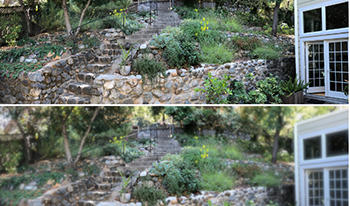References
1FrisénL.Clinical Tests of Vision1990Raven PressNew York
2NiederhauserS.MojonD. S.2002Normal isopter position in the peripheral visual field in Goldmann kinetic perimetryOphthalmologica216406408406–810.1159/000067554
3GrobbelJ.DietzschJ.JohnsonC. A.VontheinR.StinglK.WeleberR. G.SchieferU.2016Normal values for the full visual field, corrected for age- and reaction time, using semiautomated kinetic testing on the octopus 900 perimeterTransl. Vis. Sci. Technol.5555–10.1167/tvst.5.2.5
4SimpsonM. J.2017Mini-review: far peripheral visionVis. Res.1409610596–10510.1016/j.visres.2017.08.001
5SelwynE.1948The photographic and visual resolving power of lenses. Part I: visual resolving powerPhot. J.88B
6LowryE. M.DepalmaJ. J.1961Sine-wave response of the visual system. I. The Mach phenomenonJ. Opt. Soc. Am.51740746740–610.1364/JOSA.51.000740
7RobsonJ. G.1966Spatial and temporal contrast sensitivity functions of the visual systemJ. Opt. Soc. Am.56114111421141–210.1364/JOSA.56.001141
8RobsonJ.ShapleyR.LamD. M.-K.Contrast sensitivity: one hundred years of clinical measurementContrast Sensitivity19935MIT PressCambridge, MA253267253–67
9PelliD. G.BexP.2013Measuring contrast sensitivityVision Research90101410–410.1016/j.visres.2013.04.015
10WatsonA. B.AhumadaA. J.The pyramid of visibilityIS&T Electronic Imaging: Human Vision and Electronic Imaging 20162016IS&TSpringfield, VAHVEI-102-1HVEI-102-6HVEI-102-1–6
11WatsonA. B.Ahumada, Jr.A. J.FarrellJ.1986Window of visibility: psychophysical theory of fidelity in time-sampled visual motion displaysJ. Opt. Soc. Am. A3300307300–710.1364/JOSAA.3.000300
12WatsonA. B.2013High frame rates and human vision: a view through the window of visibilitySMPTE Motion Imaging J.122183218–3210.5594/j18266XY
13WatsonA. B.BarlowH. B.RobsonJ. G.1983What does the eye see best?Nature302419422419–2210.1038/302419a0
14WatsonA. B.2000Visual detection of spatial contrast patterns: evaluation of five simple modelsOpt. Express6123312–3310.1364/OE.6.000012
15CarneyT.TylerC. W.WatsonA. B.MakousW.BeutterB.ChenC.-C.NorciaA. M.KleinS. A.2000Modelfest: year one results and plans for future yearsProc. SPIE3959140151140–51
16WatsonA. B.AhumadaA. J.2005A standard model for foveal detection of spatial contrastJ. Vis.5666–10.1167/5.9.6
17RovamoJ.VirsuV.NasanenR.1978Cortical magnification factor predicts the photopic contrast sensitivity of peripheral visionNature271545654–610.1038/271054a0
18WatsonA. B.1987Estimation of local spatial scaleJ. Opt. Soc. Am. A4157915821579–8210.1364/JOSAA.4.001579
19DaceyD. M.1993The mosaic of midget ganglion cells in the human retinaJ. Neurosci.135334555334–5510.1523/JNEUROSCI.13-12-05334.1993
20StrasburgerH.RentschlerI.JuttnerM.2011Peripheral vision and pattern recognition: a reviewJ. Vis.111821–8210.1167/11.5.13
21WatsonA. B.
22RobsonJ. G.GrahamN.1981Probability summation and regional variation in contrast sensitivity across the visual fieldVis. Res.2140918409–1810.1016/0042-6989(81)90169-3
23PointerJ.HessR.1989The contrast sensitivity gradient across the human visual field: With emphasis on the low spatial frequency rangeVis. Res.29113311511133–5110.1016/0042-6989(89)90061-8
24ArnowT. L.GeislerW. S.1996Visual detection following retinal damage: predictions of an inhomogeneous retino-cortical modelProc. SPIE2674119130119–30
25BaldwinA. S.MeeseT. S.BakerD. H.2012The attenuation surface for contrast sensitivity has the form of a witch’s hat within the central visual fieldJ. Vis.1210.1167/12.11.23
26WatsonA. B.1979Probability summation over timeVis. Res.19515522515–2210.1016/0042-6989(79)90136-6
27WilkinsonM. O.AndersonR. S.BradleyA.ThibosL. N.2016Neural bandwidth of veridical perception across the visual fieldJ. Vis.16110.1167/16.2.1
28ThibosL. N.StillD. L.BradleyA.1996Characterization of spatial aliasing and contrast sensitivity in peripheral visionVis. Res.36249258249–5810.1016/0042-6989(95)00109-D
29KoenderinkJ. J.BoumanM. A.Bueno de MesquitaA. E.SlappendelS.1978Perimetry of contrast detection thresholds of moving spatial sine wave patterns. II. The far peripheral visual field (eccentricity –)J. Opt. Soc. Am.68850854850–410.1364/JOSA.68.000850
30VirsuV.RovamoJ.LaurinenP.NasanenR.1982Temporal contrast sensitivity and cortical magnificationVis. Res.22121112171211–710.1016/0042-6989(82)90087-6
31TylerC. W.HamerR. D.1990Analysis of visual modulation sensitivity. IV. Validity of the Ferry-Porter lawJ. Opt. Soc. Am. A7743758743–5810.1364/JOSAA.7.000743
32PerryJ. S.GeislerW. S.2002Gaze-contingent real-time simulation of arbitrary visual fieldsProc. SPIE4662576957–69
33WatsonA. B.AhumadaA. J.
34WatsonA. B.PelliD. G.1983QUEST: a Bayesian adaptive psychometric methodPerception Psychophys.33113120113–2010.3758/BF03202828
35FoleyJ. M.VaradharajanS.KohC. C.FariasM. C.2007Detection of Gabor patterns of different sizes, shapes, phases and eccentricitiesVis. Res.478510785–10710.1016/j.visres.2006.09.005

 Find this author on Google Scholar
Find this author on Google Scholar Find this author on PubMed
Find this author on PubMed